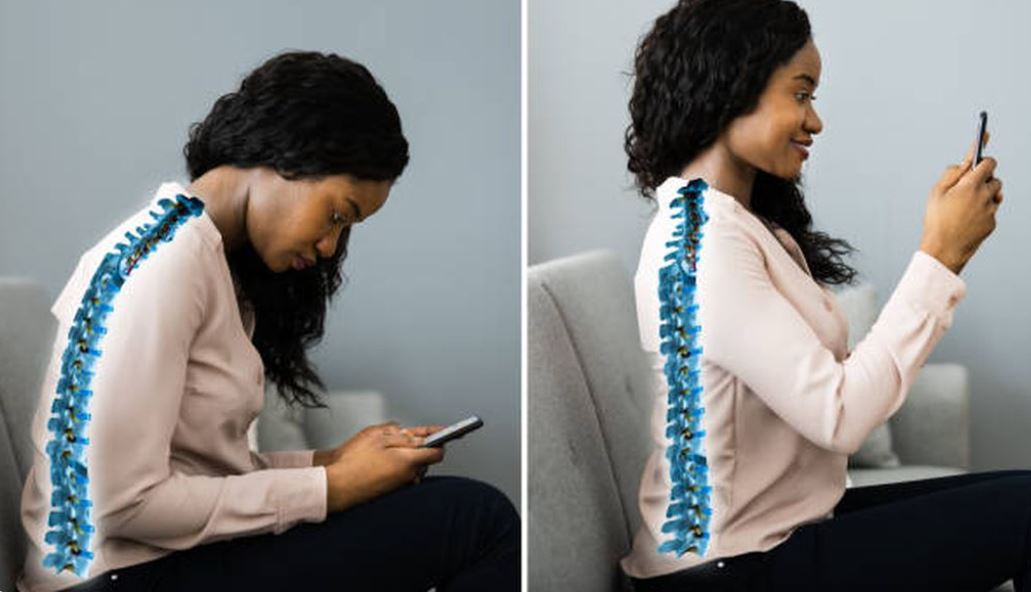Look down at your phone. Now look at your neck. Now imagine a 60-year-old version of you with a hunch. Yep. This is what your phone is doing to your posture, and it’s not a good look.
This is exactly what happens to your body
When you tilt your head down to look at your phone, you’re placing the weight of your head, which weighs around 4.5 to 5.5kg, on your neck at an awkward angle. The lower your head bends, the heavier it becomes for your spine.
Over time, this causes:
- Forward head posture (your head juts out unnaturally)
- Rounded shoulders
- Stiff neck and back
- Tension headaches
- Muscle fatigue
- And even an early-onset hump on the upper back!
Who’s most at risk?
Short answer? Everyone. But especially:
- Teenagers who use their phones excessively during their growth years
- Remote workers who hunch over phones or laptops for long hours
- People who binge content on their phones in bed (guilty)
- Social media addicts who scroll more than they sleep
The longer you spend in that hunched position, the more your body adapts to it, until it becomes your default posture.
How to fix your posture without giving up your phone
Don’t panic. We’re not asking you to toss your phone into the ocean. But here’s how to protect your body from the damage:
1. Raise your screen to eye level
2. Take regular breaks
Follow the 20-20-20 rule: Every 20 minutes, look at something 20 feet away for at least 20 seconds. Use it to reset your posture, too.
3. Stretch it out
4. Strengthen your core
A strong core supports your spine. Try planks, yoga, or Pilates to build better posture from the inside out.
5. Be aware
The biggest posture fix? Awareness. The more conscious you are of how you sit or stand, the easier it is to correct yourself.
Your body is always listening, adjusting, and adapting. So give it the support it deserves.




















